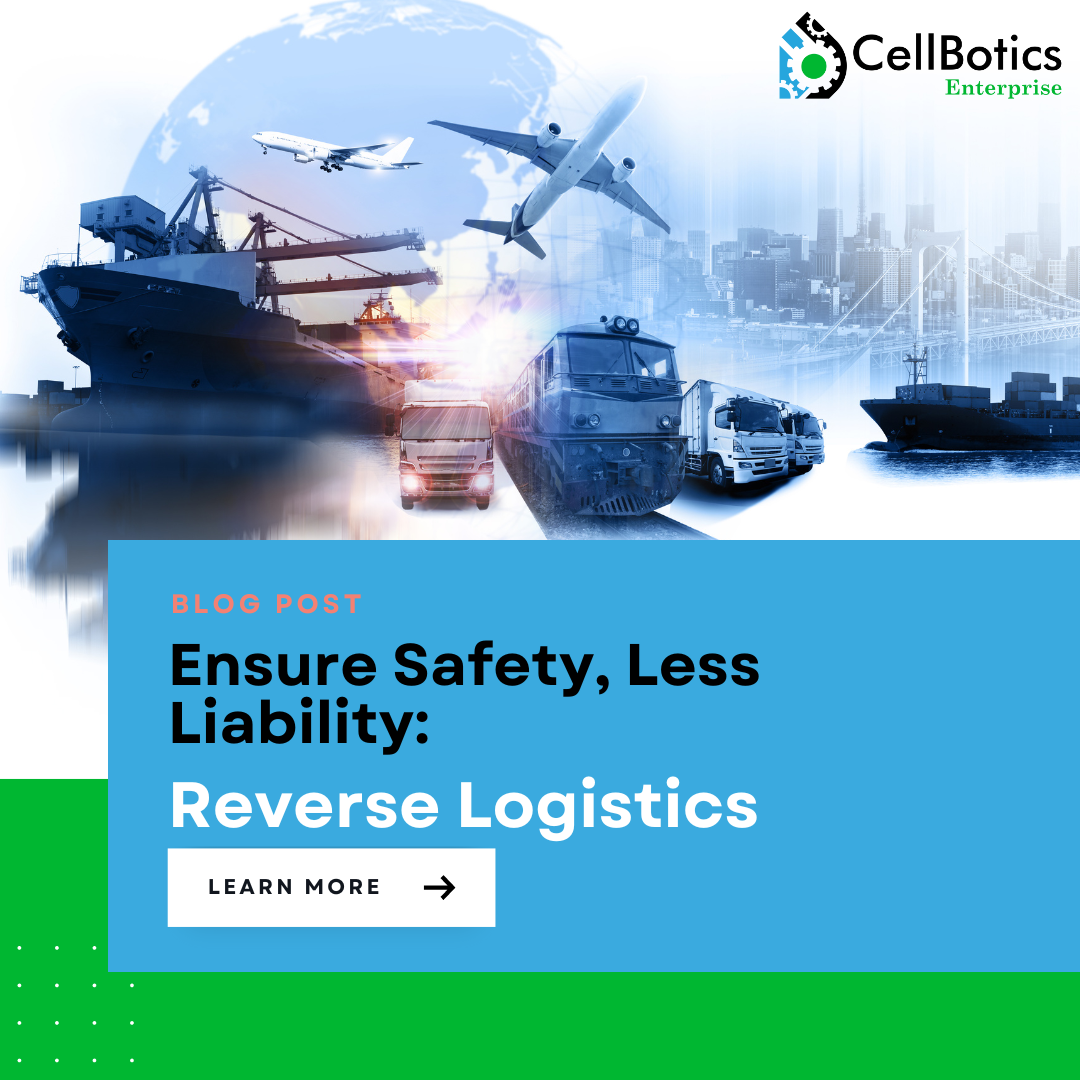Ensure Safety, Less Liability: Reverse Logistics

Ensure Safety, Less Liability: Reverse Logistics
The reverse logistics is a critical but often overlooked part of the supply chain, and ensuring safety and minimizing liability is of paramount importance. Products going back to manufacturers or distributors for returns, recalls, repairs, and more, need proper handling to ensure safety and avoid liability.
Last August 2, 2023, at 12:00 PM ET, Reverse Logistics Association conducted an enlightening webinar titled “Understanding the Government’s Role in Reverse Logistics,” shedding light on the crucial aspects of handling products to ship, return, recall, etc.

This webinar focuses on the critical involvement of the Department of Transportation (DOT) in this process and how compliance with their regulations can significantly impact businesses and the environment.
With Charles Demovic (Stakeholder Team Lead at the Office of Hazardous Materials Safety, Federal Aviation Administration DOT), James O. Simmons (Senior Transportation Specialist at US Department of Transportation/Federal Motor Carrier Safety Administration DOT), and Logan Blizzard,PhD (Transportation Specialist at Pipeline and Hazardous Materials Safety Administration DOT), the three of them explained the government’s role in reverse logistics.
What is Reverse Logistics?
Reverse logistics refers to the process of moving goods from their endpoint back to manufacturers, distributors, or other entities. This includes returns, recalls, repairs, refurbishing, recycling, and more.
Reverse logistics has grown exponentially with e-commerce and now accounts for over $100 billion in returns alone in the US. Proper transportation and compliance are crucial, with billions of items going back through complex supply chains yearly.
The Government is Helping Us!
Representatives from FMCSA, PHMSA, and FAA discussed hazardous materials regulations for reverse logistics. While enforcement exists, they aim to educate companies to avoid violations and safely handle returns.
Key takeaways included using available resources like compliance guides, seeking assistance when needed, and proactively managing hazmat risks before issues arise.
Hazards Hide Throughout Reverse Flows
Hazardous or improperly shipped materials in reverse logistics flows can cause serious safety issues and violations.
Lithium batteries are a major concern, with e-waste flows growing exponentially.
However, everyday items like makeup, spray paints and more can also be considered hazardous materials in many cases. Failure to properly identify, classify, package and communicate hazards is the top violation.
Non-compliance is very expensive: Reverse Logistics

Logan expresses the primary concern for hazardous material shipments in terms of safety. The utmost priority is to ensure that these materials are contained properly and that the associated risks are effectively communicated. This approach is crucial to avoid physical harm to workers, the general public, property, and the environment.
The main reason for raising awareness about safety compliance is not only to prevent potential harm but also to avoid significant financial burdens. Non-compliance can lead to costly consequences, not just in terms of damages to facilities and workers but also due to enforcement measures taken by the safety agencies.
In response to non-compliant practices, safety agencies conduct proactive inspections and accident investigations. They also require incident reporting, ensuring that any harmful events are accounted for and addressed promptly. While these agencies aim to be friendly and promote safety, there are severe penalties for violations.
Violators could face fines of up to $96,000 per violation. In specific cases, such as offering lithium batteries for transportation on passenger aircraft or misclassifying hazardous materials, fines could escalate to $30,000 per violation per day.
The message conveyed to members and organizations handling hazardous materials is clear: taking safety compliance seriously can significantly mitigate the risk of costly fines and potential accidents. It is essential for businesses to stay ahead of safety regulations and prioritize safety measures, not only to protect human lives and the environment but also to avoid financial repercussions that non-compliance may bring.
Ensure Safety, Less Liability

Proper training, packaging, labeling and documentation ensure reverse logistics safety and compliance. Resources are available to help companies correctly handle hazardous materials, lithium batteries, air transport, and other key areas.
Following regulations, guidance, and best practices reduces safety risks and avoids violations across transportation modes like air, ocean, rail, and road.
Compliance Starts with Assessment
Any reverse logistics handler classifies as a shipper responsible for properly identifying and handling hazardous materials. Retailers, manufacturers, 3PLs, and more must understand compliance obligations.
Frequently assessing contents, weights, transportation modes, and other factors provides the needed insight to classify and ship reverse products.
Unlocking Air Transportation Safety: FAA’s Valuable Resources for You!
Charles shared the wealth of resources available to ensure safe air transportation. The FAA’s primary teaching page offers valuable information on hazmat regulations and safe cargo handling. Three campaigns are specifically designed for PackSafe, SafeCargo, and OperateSafe – providing essential insights and basic instructional videos.
The FAA’s hazmat info page is a treasure trove for anyone involved in shipping lithium batteries, while the car repair station info at FAA.gov caters to shippers’ needs. Both resources are easily accessible through simple email inquiries, with the FAA team promising quick responses within one to two days.
Charles emphasizes that questions are highly encouraged, as the FAA is committed to helping you safely navigate air transportation challenges.
So, whether you’re a seasoned industry expert or just starting, tap into these valuable resources to ensure smooth and secure air transportation. The FAA values your feedback and strives to learn from you, ensuring the skies remain safe for everyone.
Know and Understand
Resources are available to help companies engaged in reverse logistics properly classify, package, document and ship the wide range of products that can be considered hazardous materials.
Government agencies like DOT provide extensive guides, training videos and other tools to support compliance. Utilizing these resources is key for safe, efficient reverse logistics.
Conclusion
Safe and compliant hazardous materials management is a crucial issue as reverse supply chains rapidly expand. Following available guidance and seeking assistance when needed ensures proper handling, transport, and documentation of returned, refurbished and recycled goods.
Thank you for reading my blog!
Nicole Russell

Check out this blog!
Consulting Team for Multi-Unit Brands: CellBotics and Repairs First Association

2 Responses
[…] Ensure Safety, Less Liability: Reverse Logistics […]
[…] Ensure Safety, Less Liability: Reverse Logistics […]
Comments are closed.